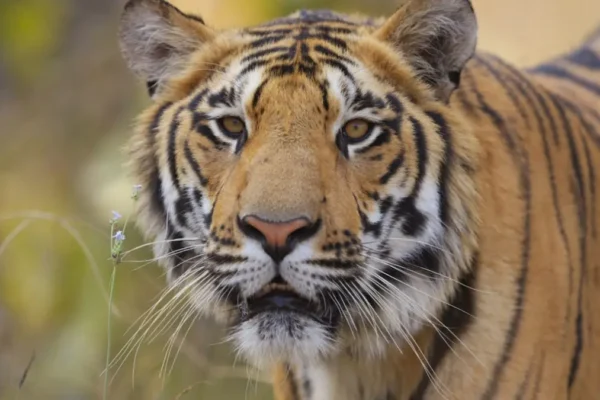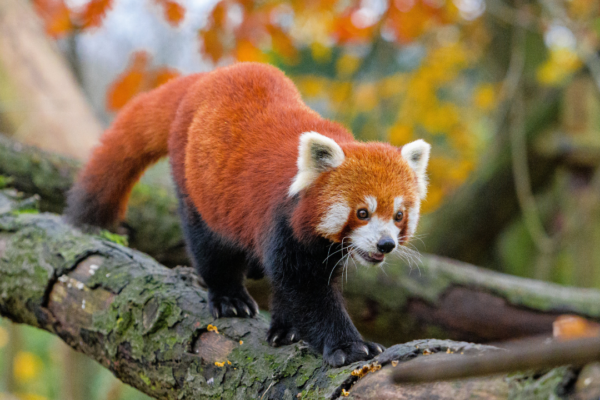Nestled in the heart of Assam, India, lies the renowned Kaziranga National Park, a UNESCO World Heritage Site celebrated for its remarkable biodiversity. Amidst this ecological treasure trove, the Asiatic wild buffaloes, also known as wild water buffaloes, find their refuge.
The Mighty Asiatic Wild Buffalo
The Asiatic wild buffalo, or Bubalus Arnee, stands as the largest of all wild bovids, weighing between 700 to 1200 kg, with body lengths ranging from 240 to 300 cm. Distinguished by their thick, dark skin, sparse black or brown hair, and imposing crescent-shaped horns that can reach up to 2 meters along the outer edges, these creatures are both powerful and majestic.
Sociable by nature, they gather in herds of up to 30 members, primarily composed of females and their young, led by a dominant female. Males lead solitary lives or form small bachelor groups, except during the breeding season when they join female herds. They communicate through vocalizations such as grunts, bellows, roars, and moos.
As herbivores, they graze on grasses, sedges, aquatic plants, and fruits, spending their days foraging in open areas near water sources. Their wallowing in mud or water helps keep them cool and protects their skin from insects and parasites.

Crucial Ecosystem Balance
Beyond their impressive stature, Asiatic wild buffaloes serve as vital indicators of the health and diversity of Kaziranga’s wetland ecosystem. They play a pivotal role in maintaining the food chain’s equilibrium by consuming significant amounts of vegetation and providing prey for apex predators like tigers, leopards, and wild dogs. They also disperse seeds and nutrients through their faeces and urine.
In addition to their role in the ecosystem, Asiatic wild buffaloes protect other endangered species within Kaziranga, providing water, food, and shelter. Their vigilant calls alert fellow wildlife to the presence of poachers or intruders.
Local communities, such as the Bodo, Mising, and Karbi, hold these creatures in high regard. Some consider them sacred beings with deep cultural significance, while others rely on them for milk, meat, and horns, which serve various purposes in their daily lives.

Challenges Faced by Asiatic Wild Buffaloes
Despite their importance, Asiatic wild buffaloes are listed as Endangered on the IUCN Red List. With a global population of fewer than 4,000, these magnificent animals face significant threats:
- Habitat loss and degradation: The expansion of human settlements, agriculture, and infrastructure has encroached upon their natural habitat, fragmenting it into smaller, isolated patches. This restricts their access to food, water, and potential mates while increasing their vulnerability to human disturbances, conflicts, and diseases.
- Hunting and poaching: Asiatic wild buffaloes are hunted and poached for their horns, meat, and body parts, which are sought after for trophies, sustenance, or traditional medicine. Some view them as pests or competitors for crops and livestock. In some instances, they are captured alive for illegal trade or entertainment.
- Disease and inbreeding: These animals are susceptible to various diseases and parasites, leading to health and reproductive challenges. Inbreeding is a significant concern due to the low population size and genetic diversity.

Conservation Efforts
Kaziranga has launched a range of conservation initiatives to protect these magnificent creatures and their habitats. These efforts encompass the creation and management of protected areas, law enforcement to curb hunting and poaching, and increasing public awareness and appreciation. Furthermore, promoting genetic diversity plays a pivotal role in securing the future of Asiatic wild buffaloes in Kaziranga.
Notable protected areas for these creatures include Kaziranga National Park, Manas National Park, and Dibru-Saikhowa National Park, each providing a sanctuary for these magnificent creatures and a diverse range of other wildlife.
The reduction of hunting pressure is achieved through a combination of law enforcement and community engagement. Local communities and stakeholders are educated on the benefits of wildlife conservation and provided with alternative livelihoods to reduce their reliance on wildlife resources.
Efforts to increase awareness and appreciation involve research, monitoring, and dissemination of information through various media. Ecotourism opportunities and environmental education programs are promoted, allowing visitors and locals to connect with and learn about these incredible creatures.
A concerted focus on genetic diversity and viability is manifested through captive breeding programs, aiming to produce healthy and genetically diverse offspring, ensuring the long-term survival of the Asiatic wild buffalo in Kaziranga.
A Collective Responsibility
The conservation of Asiatic wild buffaloes in Kaziranga is a shared responsibility. These extraordinary creatures, embedded in the intricate web of nature, are not only invaluable for the ecosystem but also for local cultures and livelihoods. Let us be amazed by the natural beauty from afar as our expedition- Kaziranga Photo Safari will illuminate the natural wonders of the Kaziranga to new heights.
Kaziranga National Park stands as a testament to the harmonious coexistence of wildlife and humanity. By championing the preservation of Asiatic wild buffaloes, we safeguard not only their species but also the delicate balance of nature in this unique sanctuary. As stewards of the land, we must ensure that these magnificent creatures continue to thrive and inspire generations to come.





